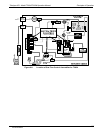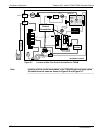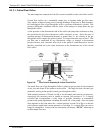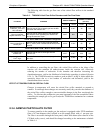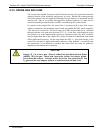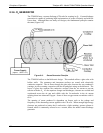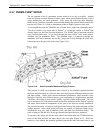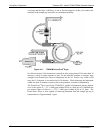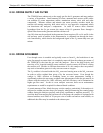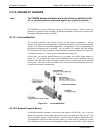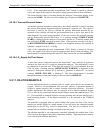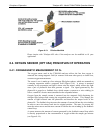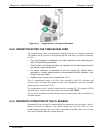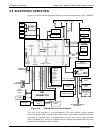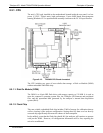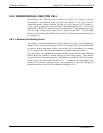
Teledyne API - Model T200H/T200M Operation Manual Principles of Operation
285
8.3.8. OZONE SUPPLY AIR FILTER
The T200H/M uses ambient air as the supply gas for the O
3
generator and may produce
a variety of byproducts. Small amounts of water, ammonia and various sulfur oxides
can combine to create ammonium sulfate, ammonium nitrate, nitric acid and other
compounds. Whereas sulfates and nitrates can create powdery residues inside the
reaction cell causing sensitivity drift, nitric acid is a very aggressive compound, which
can deteriorate the analyzer’s components. In order to remove these chemical
byproducts from the O
3
gas stream, the output of the O
3
generator flows through a
special filter between the generator and the reaction cell.
Any NO
X
that may be produced in the generator (from reaction of O
2
or O
3
and N
2
in the
air) and may cause an artifact in the measurement, is calibrated out through the Auto-
zero functionality, which checks the background signal of the O
3
stream only once per
minute.
8.3.9. OZONE SCRUBBER
Even though ozone is unstable and typically reacts to form O
2
, the break-down is not
quite fast enough to ensure that it is completely removed from the exhaust gas stream of
the T200H/M by the time the gas exits the analyzer. Due to the high toxicity and
reactivity of O
3
, a special catalytic ozone scrubber is used to remove all of the O
3
exiting
the reaction cell. Besides its efficient destruction of O
3
, this catalyst does not produce
any toxic or hazardous gases as it only converts ozone to oxygen.
The O
3
scrubber is located inside the NO
2
converter housing next to the NO
2
converter
in order to utilize residual heat given of by the converter heater. Even though the
catalyst is 100% efficient at scrubbing ozone at room temperature, heating it
significantly reduces the necessary residence time (the amount of time the gas must be in
contact with the catalyst) for 100% efficiency and full efficiency can be maintained at
higher gas flow rates. As this is a true catalytic converter, there are no maintenance
requirements as would be required for charcoal-based scrubbers.
A certain amount of fine, black dust may exit the catalyst, particularly if the analyzer is
subjected to sudden pressure drops (for example, when disconnecting the running pump
without letting the analyzer properly and slowly equilibrate to ambient pressure). To
avoid the dust from entering the reaction cell or the pump, the scrubber is equipped with
sintered stainless steel filters of 20 µm pore size on either end and on some models, an
additional dust filter may be attached to the exhaust port.
07270B DCN6512



